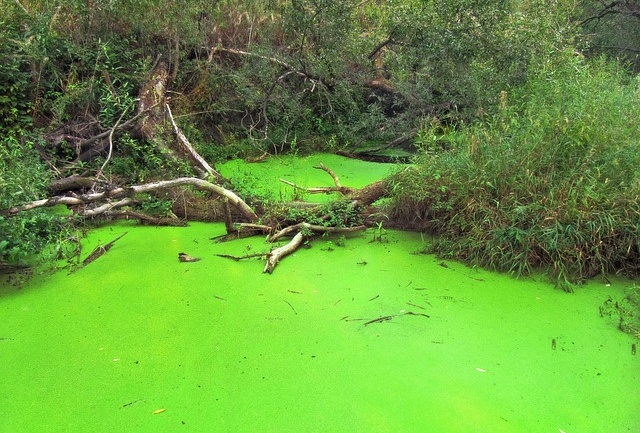Written by Swati Meshram, Ph.D., Frank Ramos
The 1970s saw a growing awareness of large numbers of chemicals in food and consumer products. The awareness brought to light the concern about the toxicity of these unregulated and untested chemicals coming in contact with humans and the environment. Then the great idea came: let’s regulate and test the chemicals for toxicity and health effects. So, after several years of negotiation, the Toxic Substances Control Act (TSCA) was enacted in 1976. Upon reading the name of the Act, it sounds like people are protected from toxic substances, but it’s more involved than that.
At that time, there were 62,000 chemicals in commercial use in the U.S., and, of course, all manufacturing could not be stopped while we tested all the chemicals. What would we do without our convenience products? Our shampoos, deodorants, aerosol sprays, frozen and packaged foods, cars, etc. The answer was to “grandfather” the chemicals (approve them without testing) and in the same law, mandate that the Environmental Protection Agency (EPA) test these chemicals for toxicity and health effects. These grandfathered chemicals are known as “existing chemicals,” and the chemicals which were manufactured after the Act was passed are known as “new chemicals.”
New chemicals
The TSCA requires a manufacturer to submit a “premanufacture notice” to EPA before they can start producing a new chemical commercially. No minimum health and safety information is required, and if the EPA has not established an “unreasonable risk” to public health within 90 days, the applicant can start production. The burden of demonstrating unreasonable risk fell on the EPA and it is a Catch-22 situation, as there is no initial testing information provided on which to base the risk, and the EPA cannot require the manufacturer to conduct further tests unless it shows a reasonable risk. Nevertheless, EPA has blocked some new chemicals from entering the market. However, the sheer volume of new chemicals registered allows most chemicals to move forward to the production phase after the 90 days.
Existing chemicals
This has been an even larger problem for the EPA to regulate. Most of the chemicals in the market today fall into this category of chemicals which were grandfathered in. TSCA presumed them to be “safe” automatically and put the burden of demonstrating unreasonable risk on the EPA once again. In addition to making the process of pulling existing chemicals off the market very laborious, the Act requires that the EPA consider not only the risk to public health, but also the least burdensome economic impact of regulation on the national economy, business, and technological innovation prior to proposing removal of any existing chemical from the market.7
The story of asbestos will demonstrate what this means—after gathering data and conducting a risk assessment and an economic impact analysis of regulation for almost 10 years, the EPA placed a ban on asbestos in the 80s, only to be challenged in court. In its 1991 ruling, this ban was removed by the Fifth Circuit Court of Appeals. It ruled that the EPA had failed to meet the Toxic Substances Control Act’s high burden of proving with “substantial evidence” that an “unreasonable” risk existed and that the proposed regulation, which would ban most uses, presented the “least burdensome” approach.9
Limits on EPA power
This effectively removed any power that the EPA had to ban any chemical ever since.1 Because of this, in addition to several other factors like budget cuts, changes in political leadership, and agency priorities, the TSCA and the EPA have done very little in achieving the original goal of the Act.6 In fact, it has only tested 200 chemicals and regulated 5. Although the EPA has employed some creative, but largely voluntary methods to achieve some semblance of looking out for public health, such as launching “chemical action plans” to review chemicals of concern, here we are 40 years later, concerned more than ever with toxicity because we are seeing the negative health effects of these 85,000 (62,000 grandfathered and an additional 23,000 new) chemicals on humans and other species.
In summary, TSCA made the taxpayers pay for tests to determine safety, and it also made taxpayers pay for the study needed to see if regulating a chemical would be onerous for the manufacturer. The response period given to the EPA within which to determine risk, without being provided sufficient relevant information, was unrealistic. The assumed safe and grandfathered chemicals created a large backlog and a huge barrier to overcome when combined with the classic case of delegating responsibility without giving any authority. The taxpayers have been paying money for a broken system while hoping to be protected from toxic chemicals.
There was clearly a need to reform the Act, and it became even more tangible when the chemical industry itself felt the need for a stronger federal system to restore lost confidence among the public.5
TSCA reform
Several attempts were made in the past to reform TSCA. Some of the proposed reforms were opposed by public health advocates for failing to address the shortcomings of TSCA, and others were protested by the chemical industry. Finally, in 2016, the TSCA went through a bipartisan revision of the original Rule of 1976.
Some (and certainly not all) of the positive changes include:
- The reform mandates that new chemicals must be reviewed and approved before they enter the market, and the EPA may ban, limit, and require additional testing of a chemical.
- It removes the burden of showing cost benefit to the economy and allows EPA to base decisions solely on health and environmental factors.
- It makes more information available by limiting what companies can claim as confidential, thereby making it accessible to states and health and environmental professionals, and allowing them to now conduct safety assessments.
- It sets judicially enforceable deadlines for the EPA to review chemicals, conduct studies, and make decisions.
- It requires protection of potentially exposed populations susceptible to harm (something not mentioned in the original Act).
- Promotion of non-animal testing methodologies where reliable alternatives exist.
- New fast track for Persistent, Bioaccumulative, and Toxic (PBT) Chemicals.
- New risk-based safety standards.
- Increased public transparency and consistent source of funding for the EPA.
- Allows manufacturers to request specific chemicals for evaluation. If the chemical is in the EPA work plan, the manufacturer pays between 50% and 100% of the cost to expedite the risk evaluation.
- The fees for new chemical review and other activities for existing chemicals have been passed on to the manufacturer, instead of the taxpayers paying for them.
- Last but not least, the new law addresses mercury export and disposal and assigns the Department of Energy (DOE) the responsibility for long term storage. EPA is also mandated to keep an inventory of all mercury and mercury compounds.
The new revision is welcomed and looks great on paper, but is it enough?
Challenges with the new reform
The new rule mandates the EPA to issue within a year, a rule establishing a risk-based prioritization process and criteria to categorize each of the chemicals in commerce into two categories: High Priority and Low Priority.4 High Priority Chemicals are substances that may present toxicity or adverse health effects to humans and the environment, taking into consideration susceptible populations such as children, elderly, etc. Low Priority Chemicals are substances that fall outside of the High Priority category and require no further action. Within 180 days of the rule, the EPA must have “10 ongoing risk evaluations and, within 3.5 years must have 20 ongoing risk evaluations at any given time.”
Once prioritized, the timeline established by the EPA is
- Prioritization (9 to 12 months), to
- Risk Evaluation (3 to 3.5 years), to
- Risk Management (2 to ~4 years).8
So, in effect 20 chemicals under review in about 3.5 years from when the act was enacted (2016), and about 8.5 years total per 20 chemicals. Let’s do the math: 94 chemicals will be reviewed/regulated in the next 40 years. Comparing that to the past track record of 200 reviewed and 5 regulated, it would appear that the new timelines will actually reduce the rate of assessment by less than half of what the EPA was able to achieve without the timelines. The only hope is that this time, the Act has given enough authority to the EPA for them to effectively regulate.
Let’s analyze from another perspective. Some of the 85,000 chemicals in commercial use will fall into Low Priority status and will require no further action. Since our concern is more about High Priority Chemicals, let’s make an ultra-conservative assumption that less than 10% will be High Priority. Specifically, let’s use the number 7,500. This is the number of chemicals the EPA estimates are currently produced or imported in high and moderate volumes.3 So at the rate of 20 chemicals in 8.5 years, it will take 3,188 years to regulate the 7,500 high and moderate volume chemicals currently in the market. At this rate, the health and safety of humans and the environment is still not being protected from for a very long time!
As of this writing, the EPA has released the list of 10 chemicals for review under the new TSCA legislation.11 Although sad, it is no surprise that asbestos is one of the first 10. It remains to be seen what budgetary, political, and legislative backing the EPA will enjoy by the new regulation and if the reform will be able to successfully eliminate asbestos from the market once and for all.
In conclusion, the new law is an improvement of the direction that must be taken to implement regulation that should improve public health. It finally gives some authority and funding to the EPA to enforce its mandates. The taxpayers do not have to bear the burden of all tests and some costs are shifted over to manufacturers, but at the end of the day, the perception that the Toxic Substances Control Act is protecting public health through regulations continues to be just a false sense of security. Even with the timelines specified in the new Act, in the best case situation, the U.S. may be lagging behind 3,188 years when it comes to testing safety for chemicals already in the market. This is definitely too little, and too late, for you and me.
References
- 3Clark Mindock; Viveca Novak. May 2015. “Toxic Chemicals.” OpenSecrets.org: Center for Responsible Politics. Retrieved from http://www.opensecrets.org/news/issues/chemical/
- 11Environmental Defense Fund. 2017. “Passing a strong new chemical safety law.” Retrieved from https://www.edf.org/health/policy/chemicals-policy-reform
- 8Nhan Nguyen; Cathy Fehrenbacher. December 2008. “Prioritization of HPV Chemicals under the Chemical Assessment and Management Program (ChAMP).” Office of Pollution Prevention and Toxics U.S. Environmental Protection Agency. Retrieved from http://bit.ly/2u7JoOI
- 6Regulations.gov. January 17, 2017. “Procedures for Prioritization of Chemicals for Risk Evaluation under Toxic Substances Control Act.” Retrieved from http://bit.ly/2u4Eeil
- 5Richard Denison. June 9, 2016. “Why Passage of Toxic Chemical Reform Is a Really Big Deal.” Daily Environment Report. Retrieved from http://blogs.edf.org/health/files/2016/06/Denison_TSCA_BNA_Insights-.pdf
- 4Sarah A. Vogel; Jody A. Roberts. May 2011. “Why The Toxic Substances Control Act Needs An Overhaul, And How To Strengthen Oversight Of Chemicals In The Interim.” Health Affairs, 30(5), 898-905. Retrieved from http://content.healthaffairs.org/content/30/5/898.full#sec-4
- 1United States General Accounting Office. July 1990. Report to the Chairman, Subcommittee on Health and the Environment, Committee on Energy and Commerce, House of Representatives; Toxic substances: Effectiveness of Unreasonable Risk Standards Unclear. Retrieved from http://bit.ly/2v0xHbD
- 7United States Environmental Protection Agency. April 5, 2017. “How EPA Assesses Chemical Safety.” Retrieved from https://www.epa.gov/assessing-and-managing-chemicals-under-tsca/how-epa-assesses-chemical-safety
- 2United States Environmental Protection Agency. December 19, 2016. “U.S. Federal Bans on Asbestos.” Retrieved from https://www.epa.gov/asbestos/us-federal-bans-asbestos
- 10United States Environmental Protection Agency. March 2, 2017. “The Frank R. Lautenberg Chemical Safety for the 21st Century Act.” Retrieved from http://bit.ly/28OjNNC
- 9United States Environmental Protection Agency. November 19, 2016. “EPA Names First Chemicals for Review Under New TSCA Legislation.” Retrieved from http://bit.ly/2gghpnS





